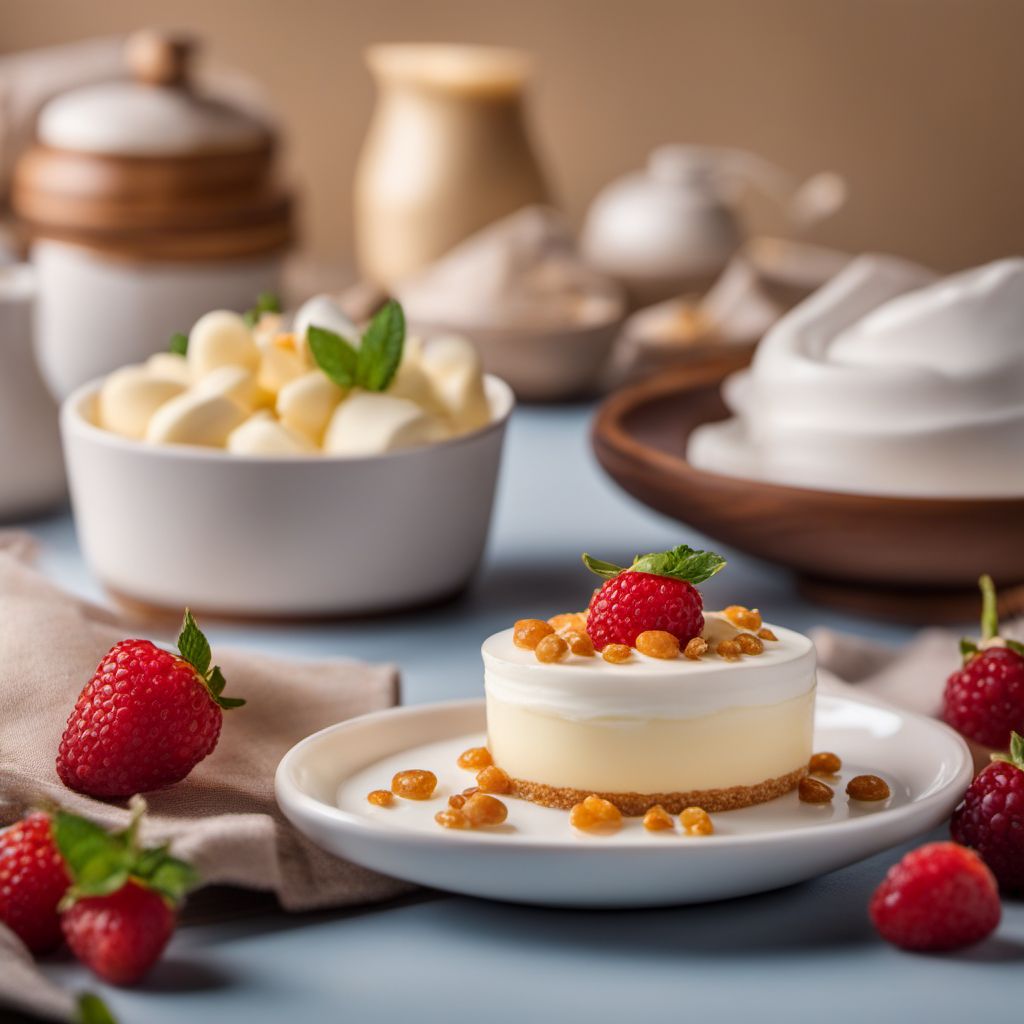
Ingredient
Dairy dessert and similar
Decadent Delights
Dairy dessert and similar encompasses a variety of delectable treats, including custards, puddings, ice creams, and mousses. These desserts are characterized by their smooth, creamy textures and luscious flavors, often enhanced with ingredients like chocolate, fruits, or nuts. They are enjoyed as standalone desserts or used as components in more elaborate creations.
Origins and history
Dairy desserts have a long history, with early versions dating back to ancient civilizations such as the Romans and Persians. Over time, these desserts have evolved and become an integral part of many culinary traditions around the world. From classic French crème brûlée to Italian gelato, dairy desserts hold a special place in global cuisine.
Nutritional information
Dairy desserts are typically high in calories, saturated fats, and sugars. They provide a good source of calcium and protein from the dairy ingredients used. However, they should be enjoyed in moderation as part of a balanced diet.
Allergens
Dairy desserts may contain allergens such as milk, eggs, and nuts, which can trigger allergic reactions in susceptible individuals. It is important to read the ingredient labels carefully and avoid these desserts if you have known allergies.
How to select
When selecting dairy desserts, opt for high-quality brands that use natural ingredients and minimal additives. Look for desserts made with real dairy, such as milk or cream, and avoid those with excessive artificial flavors or preservatives. Freshly made desserts from local bakeries or pastry shops are also excellent choices for a truly indulgent experience.
Storage recommendations
To maintain the freshness and quality of dairy desserts, it is essential to store them properly. Most dairy desserts should be refrigerated to prevent spoilage and maintain their texture. Follow the storage instructions provided by the manufacturer or recipe to ensure optimal shelf life.
How to produce
Producing dairy desserts at home requires skill and specialized equipment such as ice cream makers or pastry tools. However, simpler desserts like custards or puddings can be made with basic kitchen equipment. Follow trusted recipes and techniques to achieve the desired results.
Preparation tips
Dairy desserts can be enjoyed as is, straight from the container, or used as a base for creating more elaborate desserts. They can be served with fresh fruits, drizzled with sauces, or used as a filling for cakes, pastries, or parfaits. Get creative and experiment with different flavor combinations to elevate your dessert game.
Culinary uses
Dairy desserts are incredibly versatile and can be found in various cuisines around the world. From classic French crème caramel to Indian kulfi, these indulgent treats are enjoyed in both formal and casual settings. They are commonly served as desserts after meals or as a sweet ending to special occasions.
Availability
Dairy desserts and similar treats are widely available in supermarkets, specialty dessert shops, and bakeries. They can also be made at home using readily available ingredients and basic kitchen equipment.

